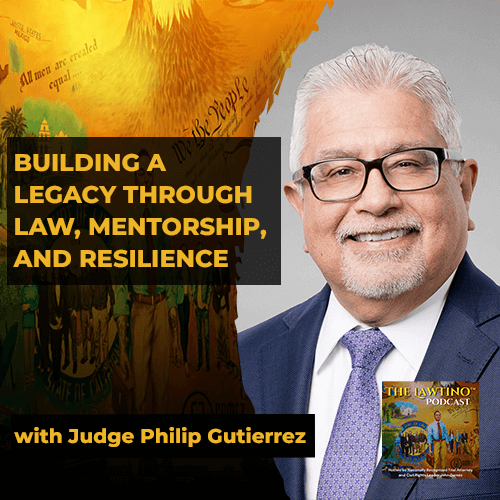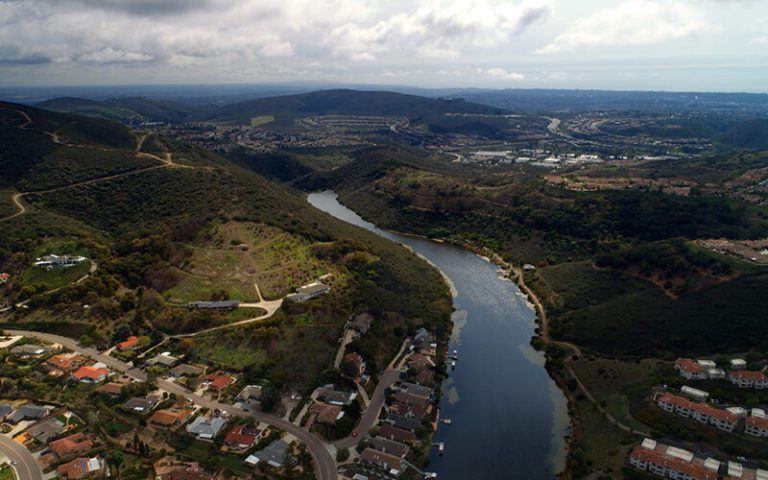The Information You Need to Know and How a Wrongful Death Lawyer Can Help You
Losing a family member is one of the most challenging events anyone can ever go through. What makes it even more traumatic is if the death was the result of a preventable accident. When this happens, the surviving family members are often left trying to figure out what they can do about this situation while dealing with their immense grief and significant financial burdens. And even though a guilty sentence against the responsible party can bring some sort of relief, it will do nothing to alleviate the other hardships the family is going through.
In California, when a wrongful death results, close family members of the deceased have a right to hold the negligent individual, corporation, or entity at fault for the actions that resulted in their loved one’s death. However, maneuvering a wrongful death lawsuit is not an easy feat. Not only does it require extensive evidence to show liability and damages, but California only allows certain parties to file while also having stringent timelines to get the job done.
In this blog post, we explore the specifics of California wrongful death claims, explaining what you need to know about them, the statute of limitations involved, and how a wrongful death attorney can help you.
About the Statute of Limitations Generally
The statute of limitations is a law that requires specific lawsuits to be initiated within a certain time period. The length of time varies depending on the facts of the case and the type of claim involved.
Cases not filed within the window of time set out in a statute of limitations are barred—that is, the injured party loses the legal right to make the claim.
The purpose of the statute of limitations is to ensure that parties bring legal claims for damages forward within a timeframe that reasonably allows for the swift and fair administration of justice based on reliable evidence.
California’s Wrongful Death Statute of Limitations
In California, the statute of limitations for a wrongful death claim is generally two years from the date of the death. However, exceptions to this statute of limitations can increase or decrease the amount of time available to take legal action, which is why it is important to speak with a California wrongful death lawyer as soon as possible after a loved one’s tragic death.
Exceptions to the two-year limitations window can include:
The Discovery Rule Can Extend Time
Sometimes, an individual’s cause of death is not apparent right away, but emerges later through investigation or the revelation of an important fact that had been hidden. In those instances, the law may extend the amount of time the deceased’s family has to file a wrongful death action to two years from the date of the discovery of the information showing the cause of death.
For example:
- If someone concealed or covered-up critical information about the cause of death, and a diligent investigation did not disclose that a condition or product until later, then the discovery rule may apply.
- If death resulted from the use of a consumer product, which research later revealed to be toxic, then the discovery rule can extend the time limit for taking action.
- If previously undisclosed exposure to a toxic chemical caused a death, then the discovery rule can apply.
Do not assume that your family has no right to take legal action simply because more than two years have passed since your loved one’s death. In many cases, a reasonable investigation would not have revealed the cause of death at the time, making the discovery rule a potential avenue for asserting your rights more than two years later.
Tolling Can Extend Time
In some (relatively rare) circumstances, the person who caused a wrongful death cannot be served with a lawsuit because the person is in hiding or has left the country. In those instances, the statute of limitations timer gets paused for as long as the person remains unavailable.
Minor Child With Right to Sue Can Have Extra Time
Sometimes, the only party with the right to take legal action for wrongful death is a minor child (for example, in a case in which both of the minor’s parents die in a motor vehicle accident). In those instances, the two-year timer for filing a wrongful death action does not begin running until the minor turns 18.
Incapacitated Person With Right to Sue Can Have Extra Time
If the person with the legal right to sue for wrongful death is an incapacitated person, then the clock stops running on the statute of limitations in California until that incapacity has been removed. Generally, incapacity means an inability to care for oneself and/or to manage one’s own affairs, such as when an elderly person has dementia, or a person is in a coma. Incapacity is cured by the person regaining their capabilities, or by the appointment of a legal representative for the incapacitated person.
Claim Against Government or Public Entity Can Shorten Time
If the party legally liable for causing a California wrongful death is a governmental or a public entity, such as the state of California, a town, or a county, then the family may have as little as six months to begin taking legal action.
Claim Involving Medical Malpractice Can Shorten Time
If the death results from an instance of medical malpractice, the family may have as little as one year from the date of death to take legal action. Actions involving medical malpractice also have special procedural requirements, so speak with an experienced attorney right away if they suspect a medical error caused their loved one’s death.
As the examples above reflect, figuring out how much time your family may have to take legal action for a wrongful death can get extremely complicated. For that reason, we encourage anyone who has lost a loved one because of someone else’s wrongful decisions or actions to contact an experienced wrongful death attorney as soon as possible.
Compensation for Wrongful Death
A wrongful death claim is a lawsuit seeking compensation for wrongful actions (either intentional or unintentional) that result in someone’s death. The events that lead to a wrongful death claim vary widely, from car crashes to accidental fires. Anyone whose careless, reckless, or intentionally harmful decisions or actions led to someone’s death can face legal liability in a wrongful death action, including individuals, businesses, and governmental agencies.
Who Can Sue for Wrongful Death
Under California law, only the following individuals may file a lawsuit for wrongful death:
- The deceased person’s surviving spouse or domestic partner;
- The deceased person’s surviving children;
- The deceased person’s grandchildren (if the deceased’s own children have also passed away)
- Individuals who were financially dependent on the deceased for at least 50 percent of their financial support, including:
- Step-children
- Parents
- Children of an assumed spouse
- An assumed spouse (this is a surviving spouse of a voidable or void marriage who has a good faith belief that their union was valid.
- A minor, who resided in the deceased’s household for the previous 180 days and was dependent on the deceased for one-half of their support.
- If none of the above exists, then the wrongful death claim can be brought by individuals entitled to inherit from the deceased under California laws.
Wrongful Death Damages
The point of wrongful death damages is to compensate the family for the deceased’s death, including by providing the value of the support the deceased person could have been reasonably expected to provide for them.
These damages may include:
- Medical Bills
- Loss of a family’s benefits (Social Security, Health Insurance, Pensions)
- Funeral and Burial Expenses
- Loss of a family’s inheritance or gifts that the family could have expected to receive from the deceased
- Loss of Moral Support
- Loss of the value of goods or services that would have been provided by the deceased
- Loss of intimacy, loss of love, loss of companionship.
- Loss of protection, care, training, and guidance from the deceased.
Measuring Damages
The amount of damages a family member may seek as compensation for a wrongful death varies widely depending upon the circumstances. Some of the categories of damages listed above are more straightforward to calculate than others. For example, medical and funeral expenses are reflected in bills and invoices.
Other categories of California wrongful death damages can prove more challenging to figure out, because they depend on several independent factors.
For instance, the loss of income resulting from a wrongful death may depend on:
- The deceased’s age, life expectancy, and number of working years left;
- The deceased’s income, benefits, and future expected pay raises;
- The deceased’s skills, education, and specific abilities;
- The rate of inflation and expected wage growth; and
- The benefits and retirement contributions the deceased would have received.
Perhaps the most challenging category of compensation to calculate is so-called non-economic damages, which are harms not associated with specific expenses or financial losses. Pain and suffering is a category of non-economic damages, for instance.
In California, there is no fixed standard for or cap on the amount of non-economic damages that the surviving family members of a wrongful death victim may receive (the most notable exception being wrongful death resulting from medical malpractice). Instead, non-economic damages require a reasonable assessment of the personal harm done by a wrongful death, which can vary widely.
To determine the amount of damages your family may expect to recover through a wrongful death action, contact a knowledgeable and trusted wrongful death attorney as soon as possible. The sooner you speak with an attorney about a tragic death, the better your family’s chances of recovering the full measure of damages you deserve for your loss.
Proving a Wrongful Death Claim
To prove a California wrongful death claim, the attorney for the family must have evidence to show that someone’s careless, reckless, or intentionally-harmful actions caused the family member’s death. The evidence that can prove that claim comes in a wide range of forms, depending upon the circumstances of the death.
For example:
- In a motor vehicle accident, evidence may include police reports, eyewitness accounts, photos and videos of the accident scene, and opinions from accident reconstruction experts.
- In an accidental drowning, evidence may include medical reports about the cause of death, swimming pool maintenance records, and statements by EMTs who responded to the incident.
- In a violent crime, evidence may consist largely of the information gathered by homicide detectives who investigated the crime.
- In a case of medical error, evidence may consist of medical records, the testimony of medical personnel who witnessed the error, opinions of medical experts about the required medical standard of care.
- In a case involving a defective consumer product, evidence may include testimony from design engineers, and the remains of the defective product itself.
Every wrongful death case features particular and unique facts and circumstances that may help a lawyer prove a claim. Families of wrongful death victims should save everything they have relating to the death for their lawyer to review. What seems like the smallest scrap of paper or random photograph could provide the key to proving a wrongful death claim.
An Experienced Wrongful Death Lawyer Can Help

Losing a family member takes a heavy toll. Dealing with a significant loss adds a significant burden to daily life, making it difficult to juggle demands on your time and energy. The last thing you have the time to think about is how to manage your legal rights.
Trust an experienced wrongful death attorney to handle the legal affairs related to your loved one’s tragic death. Lawyers can investigate who owes you compensation, negotiate with defense lawyers and insurance companies to try and achieve a fair settlement, and litigate in California courts if that is what it takes to get you and your family the justice and compensation you deserve.
Contact a knowledgeable, experienced, and compassionate wrongful death lawyer today for a free, confidential, no-obligation case evaluation.







